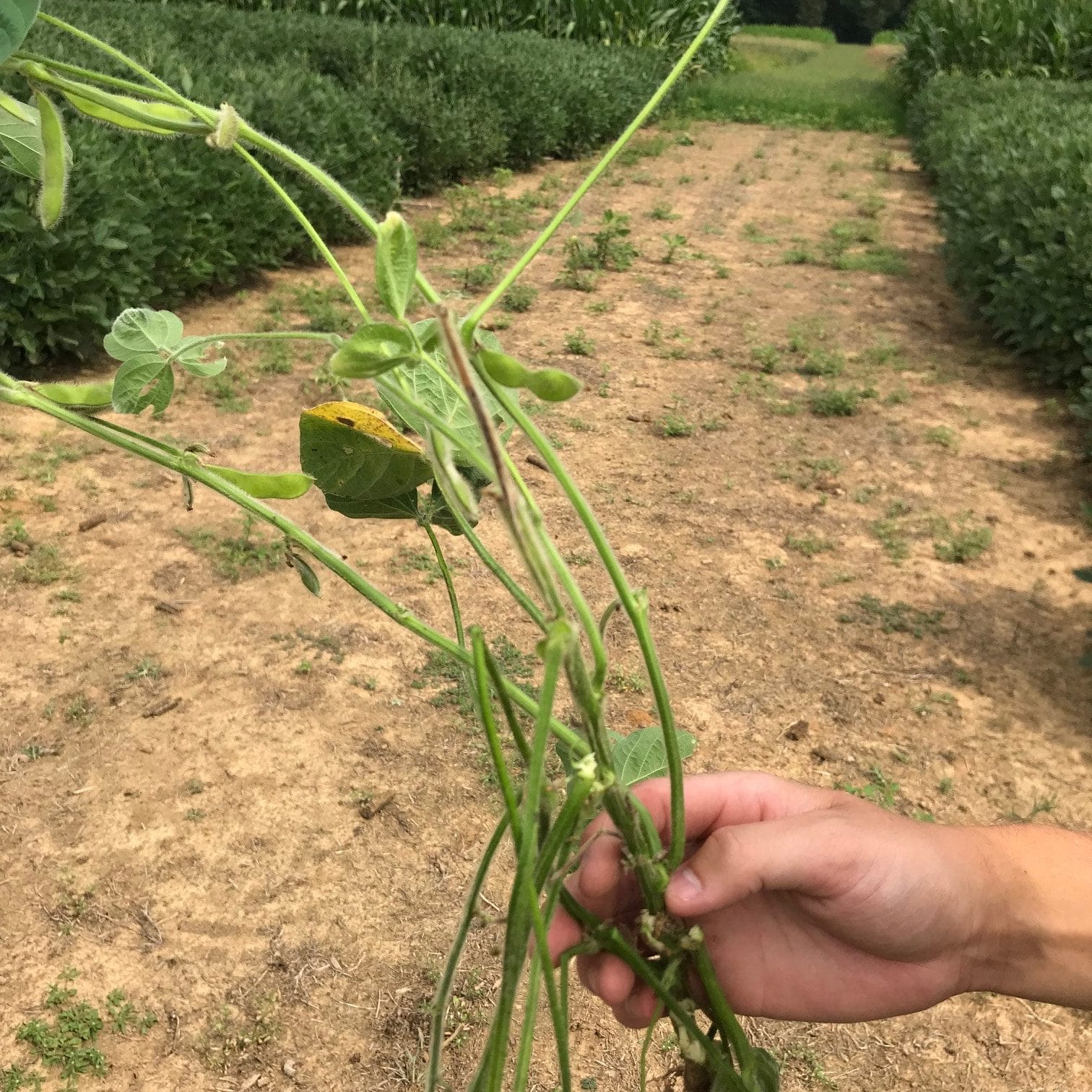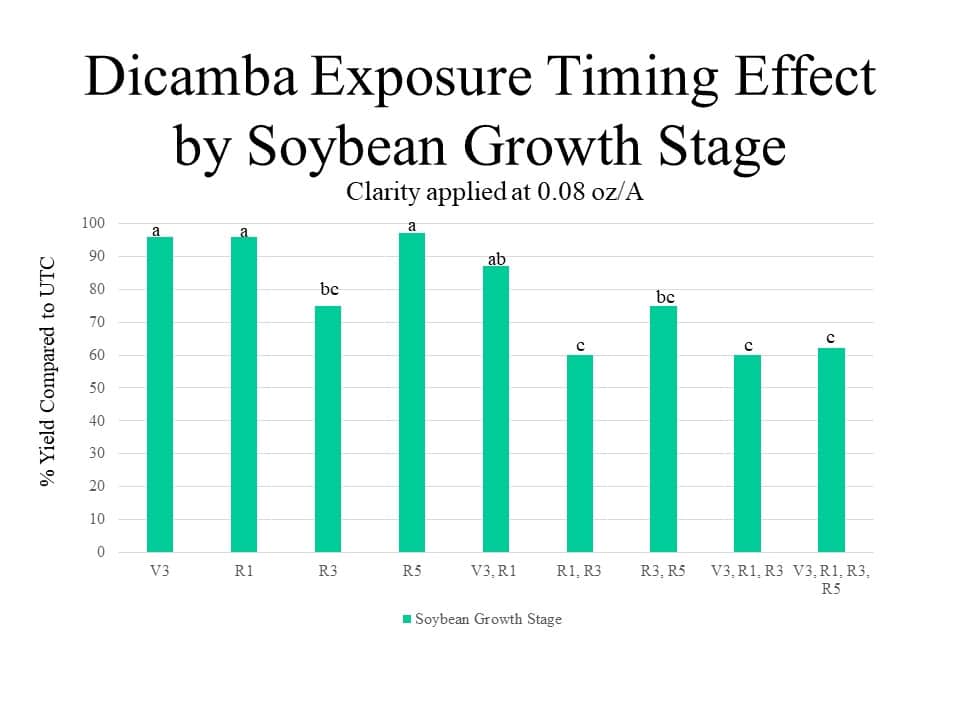The most recent inquires have been on what is the likely yield loss from dicamba drift to non-Xtend soybeans? These have come from fields that showed dicamba drift injury to the soybeans this summer and now are staying green delaying harvest this fall.
These questions have been frequent the last few years. Research funded by the United Soybean Board was conducted in the Mid-south and Midwest this summer to help answer the question. This study conducted at the Milan Experiment station this summer provided some interesting results.
This research consisted of applying 0.0025 lbs/A of dicamba (1/200th the field use rate in Xtend crops) to Roundup Ready soybeans at the V3, R1, R3, R5, V3+R1, R1+R3, R3+R5, V3+R1+R3, V3+R1+R3+R5 soybean growth stages. The dicamba was applied using AIXR nozzles and a hand boom.
The dicamba low rate exposure to soybeans at the V3, R1 or R5 soybean growth stages resulted in no significant yield loss compared to the untreated check. However, numerically those treatments consistently yielded a little less. The talked about “yield bump” from the low rate dicamba exposure was not seen (Data Below).
What was most interesting is that the low rate of dicamba applied at the V3 or R1

growth stages often terminated the apical meristem of the soybean which caused lower lateral branches to initiate (Picture right). It appears the dicamba concentrated in the apical meristem and was sequestered there. Then lateral branches low on the plant initiated and were able to provide yield similar to soybeans not exposed to dicamba.
Compared with the untreated check, there was a dramatic yield loss of 25% when soybeans were exposed to dicamba at the R3 soybean growth stage. Yield loss was even more severe when the soybeans were exposed to dicamba multiple times around the R3 soybean growth stage (25 to 40% yield loss).
So the answer to the question on yield loss starts with the phrase “it depends”. If soybean are exposed around full flower significant yield loss is very likely. On the other hand if it occurs prior to full flower these data suggest that soybeans may have the ability to recover and yield well provided good growing conditions occur. This, of course, is just one test and one should be careful drawing major conclusions from a single test. However, this study was conducted by many Land Grant Universities in the Mid-south and Midwest. It will be very interesting to see what the results will show collectively across this diverse geography. 

